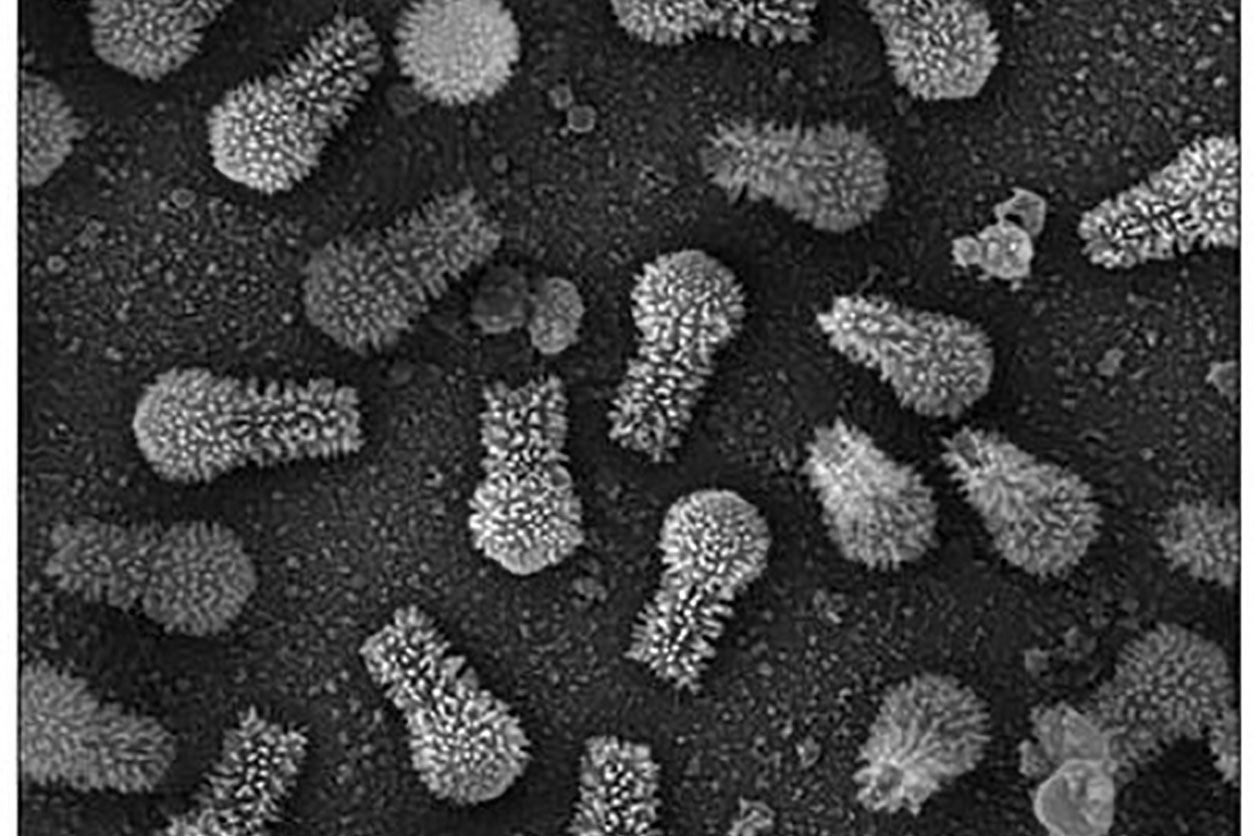A new NIEHS-funded study found that giant viruses, which have genomes larger than 300 kilobase pairs and protein shell diameters greater than 200 nanometers, have genes that encode for unique enzymes called cytochrome P450. Giant viruses are found in deep seas and oceans worldwide. In animals, P450 enzymes metabolize drugs and fatty acids, make steroid hormones, and defend against pollutants.
According to the research team, P450 enzymes make up an important enzyme superfamily. They are common in land animals, plants, and bacteria, but the research team was surprised to find that they commonly occur in giant viruses.
'The P450 enzymes were discovered in 2003 and are large enough to be seen with a light microscope,' said senior author John Stegeman, Ph.D. 'We have yet to find out what they are doing in these viruses, but most of the giant virus P450s are unlike P450s known in any other organism.' Stegeman directs the NIEHS-funded Woods Hole Oceanographic Institution (WHOI) Center for Oceans and Human Health (OHH) and leads a project at the Boston University Superfund Research Program (BU SRP) Center.
 Stegeman, shown here at a 2014 NIEHS talk, is a leader in studies of P450 systems, including those in aquatic organisms. (Photo courtesy of Steve McCaw)
Stegeman, shown here at a 2014 NIEHS talk, is a leader in studies of P450 systems, including those in aquatic organisms. (Photo courtesy of Steve McCaw)'This is an interesting and very novel finding,' said Fred Tyson, Ph.D., NIEHS OHH health scientist administrator. 'It brings to light new information about the P450 gene family and has implications for understanding more about the biology of giant viruses.'
New window on enzyme evolution
'The giant viruses have changed the way we think about viruses,' said Stegeman. 'Finding P450 genes and enzymes in diverse viruses opens a new window on the evolution of these important enzymes, which may help in understanding the origin of the giant viruses themselves.'
The origin of the P450 genes in giant viruses remain unknown, the authors wrote. They compared the giant virus P450 genes with P450 gene products from a common amoeba that hosts many giant viruses. The virus P450 proteins shared no more than 25% identity with the amoeba P450 proteins. If the genes were acquired from a host, they were likely derived from an unknown or ancient host, possibly early in giant virus evolution.
 Giant viruses, such as the tupanvirus shown here from another study, have been found worldwide and can contain thousands of genes. By comparison, the influenza virus has 14 genes. Jonatas Abrahao et al and Nature Communications under Creative Commons Attribution 4.0 International license.
Giant viruses, such as the tupanvirus shown here from another study, have been found worldwide and can contain thousands of genes. By comparison, the influenza virus has 14 genes. Jonatas Abrahao et al and Nature Communications under Creative Commons Attribution 4.0 International license.Among the 8,100 viruses screened from the deep ocean, land, and human patients, the research team also identified P450 genes in two non-giant viruses. One virus causes dermatitis in frogs, and the other is a mycobacterium phage, which infects specific mycobacteria.
Co-author Alec Follmer, Ph.D., and colleagues determined the crystal structure of the phage’s P450 and observed that it was similar to P450 genes in its mycobacterium host. The similarity indicates that, unlike the giant viruses, the phage likely acquired the P450 gene from its host.
Translating to humans
The authors suggested that by furthering our knowledge of sea and land viruses, the findings could present potential new drug targets for giant viruses that may be human pathogens.
'We know that giant viruses may be linked with some forms of pneumonia,' said first author David Lamb, D.Sc., a scientist at Swansea University Medical School and a US-UK Fulbright Visiting Scholar in Stegeman’s laboratory. 'Gaining a better understanding of them will help us develop ways of tackling those viruses.'
P450 enzymes also have broad metabolic roles in altering chemicals in the body and detoxifying and activating a variety of environmental contaminants, roles not previously thought to be relevant to viruses.
Citation: Lamb DC, Follmer AH, Goldstone JV, Nelson DR, Warrilow AG, Price CL, True MY, Kelly SL, Poulos TL, Stegeman JJ. 2019. On the occurrence of cytochrome P450 in viruses. Proc Natl Acad Sci U S A 116(25):12343−12352.
(Sara Amolegbe is a research and communication specialist for MDB Inc., a contractor for the NIEHS Division of Extramural Research and Training.)









